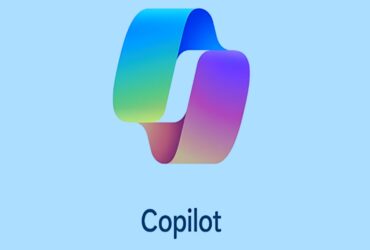The CSV (Comma-Separated Values) format serves as a fundamental means of organizing, storing, and exchanging tabular data in the form of plain text. In use for over five decades, the format has evolved over the years and so far forms the bedrock for a variety of tasks. So, understanding how it works is paramount, especially if you are engaged in software development or data analysis and spend a lot of time with spreadsheet apps. Let’s explore the intricacies of the CSV format to help you work efficiently with data.
Understanding CSV Document Structure
Since CSV files represent plain text, they are easy to read even for non-technical users. Their structure contains three basic components:
| Component | Meaning |
| Header | The first line in a CSV file indicates the data type in each column. It preserves the same format as all other rows, with each value separated by a comma. |
| Delimiter | This is the core of CSV formatting – a character that separates data values in every row. While the comma is the most common delimiter, some other characters like pipes (|), semicolons, and tabs may also be used. The choice depends on the requirements and specifications of the particular software. |
| Rows | Rows follow the file header, representing new data entries, while the values are organized according to the sequence of column titles and separated by commas (or any other chosen delimiter). |
Check out an example of a CSV document to get a better understanding of how it works. The header line contains column titles, and all subsequent rows are filled with data values:
| ID, Name, Email, Country1, Dan Greene, danis@gmail.com, United States2, Jamie Bonilla, jambo@gmail.com, Portugal3, Betsy Suarez, su1290@gmail.com, Colombia |
Why Use CSV Format?
CSV is a widely embraced format for handling structured data, and here’s why:
Simplicity
CSV documents are easy to create and modify with either dedicated spreadsheet software or basic text editors. Thanks to their straightforward structure, these files are understandable to everyone, including not-so-tech-savvy users.
Compatibility
CSV boasts good compatibility across different platforms and applications. It’s a universal file format supported by a wide range of digital workbooks and data processing tools, as well as popular spreadsheet programs (Excel, Google Sheets, etc.), databases (PostgreSQL, MySQL, etc.), and programming languages like Java and Python.
Small Size
The CSV format is known for its lightweight nature since such files do not have the complex styling and formatting settings found in other e-documents like Excel. That’s why CSVs work well for handling big datasets and transferring data across networks with minimal consumption of resources.
Common Use Cases for CSV Documents
- Data sharing: as long as two applications can open a CSV document, they are commonly used for data exchange. For instance, you can export your records from Excel to Google Sheets and vice versa.
- Data storage: Businesses may use CSV documents to store various types of data (customer contacts, inventory management, financial records, product lists, and so on).
- Data analysis: Data analysts often leverage CSVs to manipulate vast amounts of data, such as surveys, sales, scientific measurements, etc.
- Content management on the web: e-commerce websites may use CSV files to manage the information about their products (e.g. prices, descriptions, and discounts).
CSV vs PDF: When Is It Worth Switching Formats?
Despite all the advantages of CSV, it does not work equally well every time you need to handle structured data. PDF can overcome its limitations, helping you manage your data sets in the best way possible. Consider the scenarios when it will be a good idea to convert CSV to PDF:
- Adding media content, interactive elements, or complex data. Since CSVs are designed for storing only plain text, you will not manage to add images, graphs, buttons, or other complex visual structures to your files. PDF, in turn, supports all these elements and even more, allowing you to create presentable, professional-looking content.
- Enhancing file accessibility. Even though CSV files are compatible with a wide range of text editors and software apps, far from all users have these tools or know how to open CSVs using them. To avoid the hassle, it’s better to convert the document to PDF, ensuring that your recipient will be able to access content using any browser or file viewer.
- Improving data security. The PDF format is renowned for supporting enhanced security features. Hence, you can encrypt your files, protect them with passwords, and restrict content editing, copying, or printing. Such safety measures are of paramount importance when you are sharing or storing sensitive data.
- Preparing data for printing or sharing. PDF preserves its exact layout, styling, and formatting no matter what device and platform is used to view the file, which makes it a go-to option for sharing and printing. CSVs, in turn, may look differently on various screens.
How to Convert CSV to PDF
Use a free online converter like PDF Flex to transform CSV to PDF in a few clicks without losing the quality of your original file. The steps are easy:
- Open the converter.
- Upload a CSV document into the specific area.
- The conversion will start automatically – wait a couple of seconds until it ends, and then download the newly-made PDF on your device.
Final Thoughts
CSV is a straightforward format that keeps structured data clear and manageable. It suits a wide range of tasks, making it useful for developers, analysts, and business teams who need a reliable way to store and share information. Because the structure is simple, converting CSV files into other formats is quick and convenient, especially with online tools. This flexibility is one of the reasons What Is a CSV File and When to Use It remains an important topic for anyone handling digital data. With the right approach, CSV becomes a practical solution for daily data tasks.













































Leave a Reply